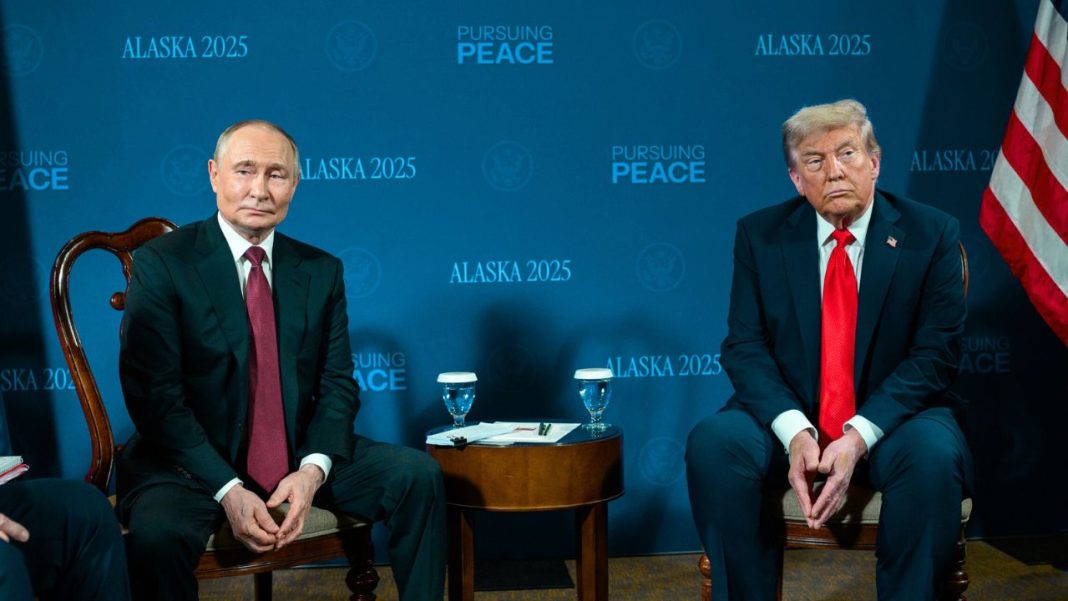Russian President Vladimir Putin’s landmark visit to Alaska for talks with U.S. President Donald Trump ended without any agreement to halt the war in Ukraine. The meeting, held at a U.S. airbase in Anchorage, marked Putin’s first time on Western soil since the 2022 invasion, offering the Russian leader a powerful diplomatic moment, though the summit delivered few results.
Trump Welcomed Putin in Alaska
Putin was warmly welcomed with a red carpet and handshake from Trump, an image that stood in stark contrast to the frosty reception Ukrainian President Volodymyr Zelenskyy received during his February visit to Washington. The choice of Alaska carried symbolic significance: the state was once part of the Russian Empire before it was sold to the U.S. in 1867 for $7.2 million, a deal that later proved to be economically transformative for America.
Putin opened the post-summit remarks with the line, “Good afternoon, dear neighbour,” referencing the historic ties and geographic closeness of Alaska to Russia. He claimed “progress” had been made and expressed hope for peace, but offered no details. Trump echoed similar sentiments, saying, “There is no deal until there is a deal,” and vaguely referred to unresolved issues, while promising to consult NATO and Ukraine.
Despite earlier threats of sanctions if no ceasefire was reached, Trump offered no punitive measures, instead floating the idea of further dialogue. The summit ended with Putin’s cryptic invitation, “Next time, in Moscow”, which Trump responded to cautiously, acknowledging he might “get a little heat” for such a visit.
Trump Hikes Tariffs on India and China Following Alaska Talks
In the wake of the inconclusive Alaska summit, President Trump made a sudden pivot in U.S. trade policy, announcing increased tariffs on select imports from China and India. The new measures include a 15% tariff hike on Chinese steel and electronics, and a 10% increase on Indian pharmaceutical and textile imports.
Trump cited “unfair trade practices” and the need to “restore balance” in global trade, but political analysts view the move as an attempt to reassert control and shift the narrative after failing to secure a Ukraine ceasefire. “We’ve been taken advantage of for far too long,” Trump said in a follow-up address from Washington. “This is about protecting American jobs and interests.”
Critics argue the tariff increases could strain relations with key Indo-Pacific partners, particularly at a time when global unity is needed against Russian aggression. India’s trade ministry expressed “serious concern,” and Chinese officials warned of retaliatory measures.
With the Alaska meeting producing more symbolism than substance, Trump’s aggressive tariff stance may be a strategic pivot, aimed at reinforcing his image as a tough negotiator, even as diplomatic efforts on Ukraine stall. Whether it strengthens his domestic position or worsens global tensions remains to be seen.
और पढ़ें: Trump 2.0: Controversial Policies that are shaping his second round of Presidency



